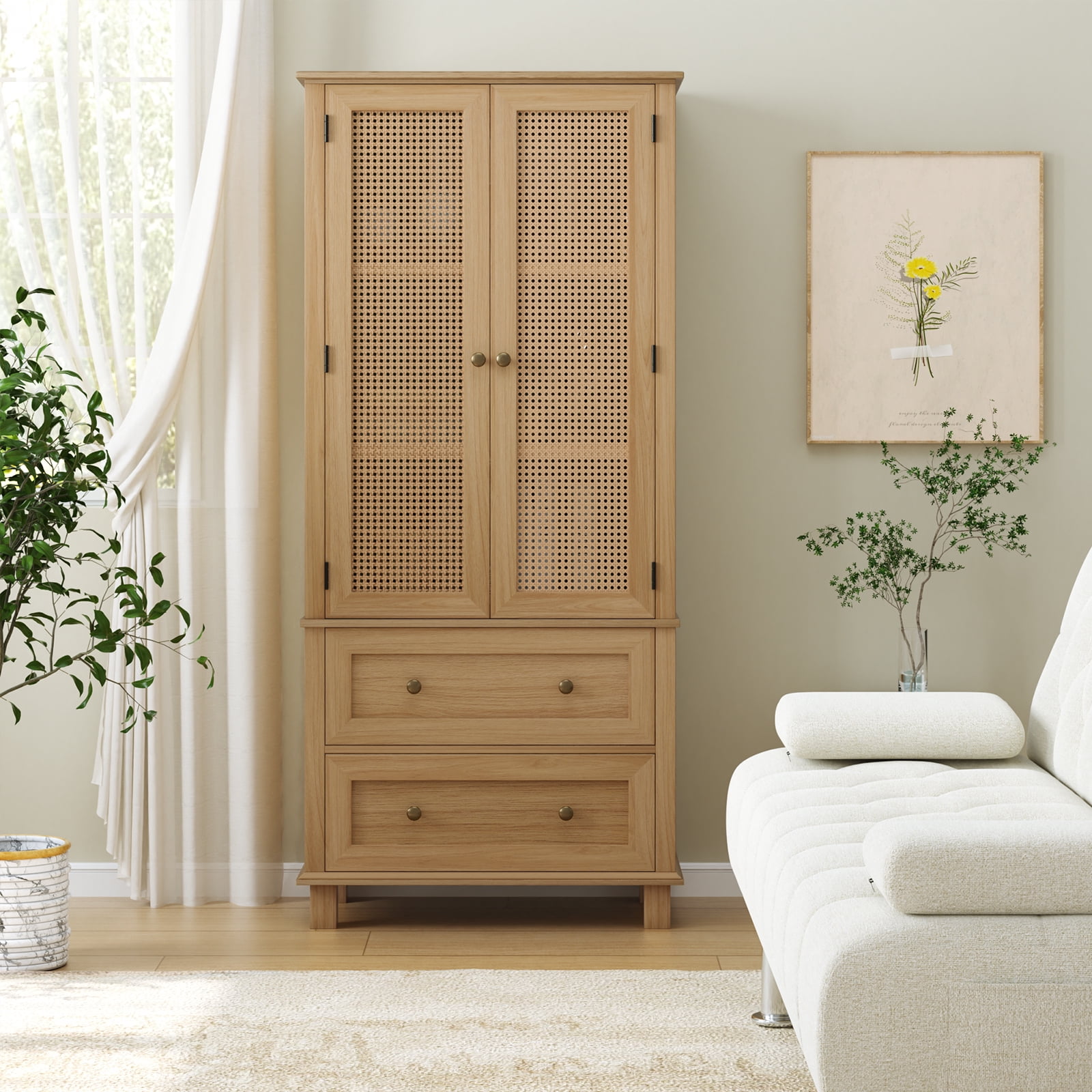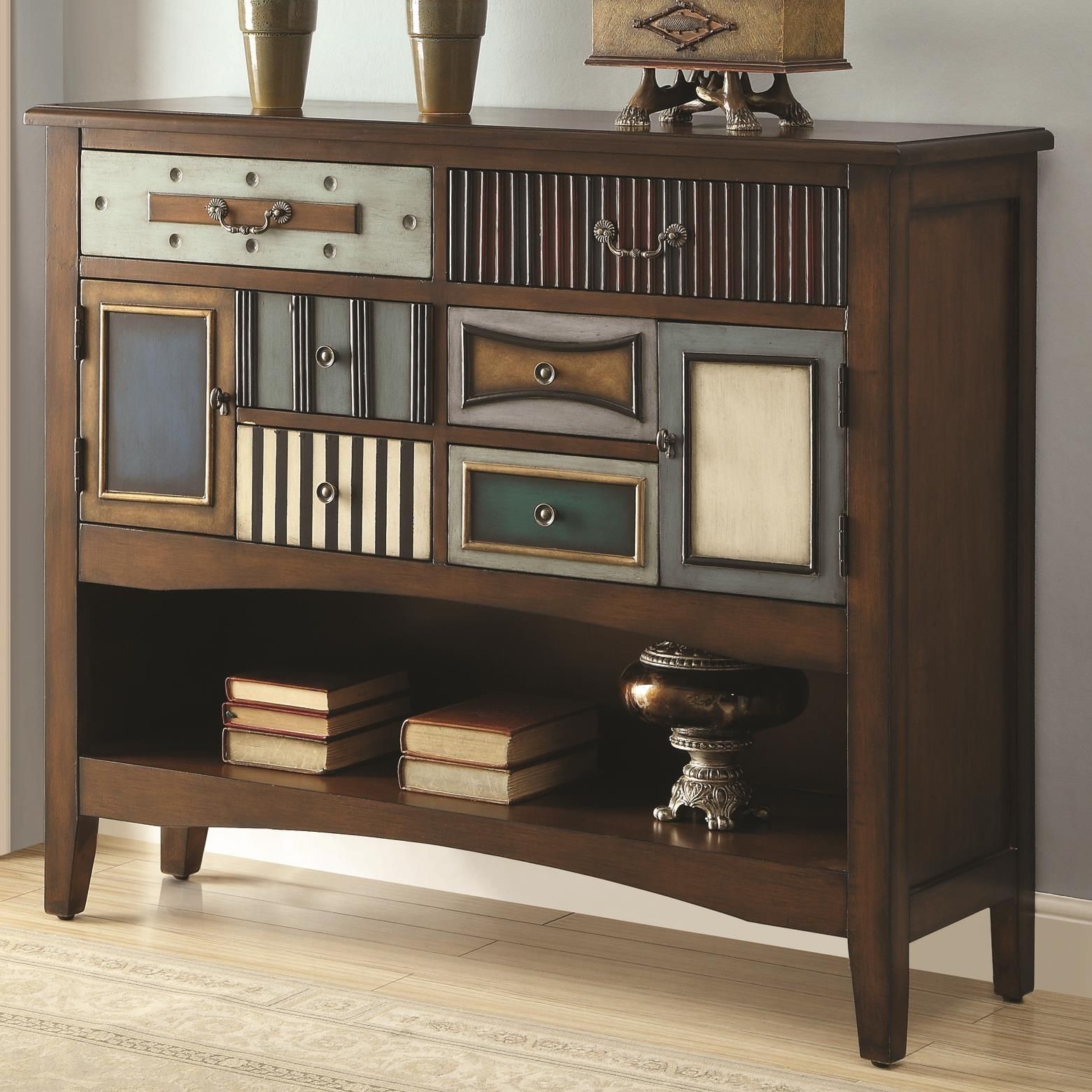Design & Features of Accent Cabinets: Accent Cabinet With Drawers And Doors

Accent cabinets, with their blend of form and function, offer a versatile solution for enhancing storage and style in any room. Their design flexibility allows them to seamlessly integrate into diverse interior schemes, from the most modern minimalist settings to the warmest traditional spaces. The careful selection of materials, dimensions, and features plays a crucial role in achieving the desired aesthetic and practical benefits.
Accent Cabinet Design Styles
The design style of an accent cabinet significantly impacts its overall look and feel. Choosing a style that complements the existing décor is essential for creating a cohesive and visually appealing space. The following table showcases some popular styles, materials, and features.
| Style | Material | Drawer/Door Features | Price Range |
|---|---|---|---|
| Modern | High-gloss lacquered wood, metal, glass | Sleek, minimalist handles; push-to-open mechanisms; full-extension drawers | $300 – $2000+ |
| Traditional | Solid wood (oak, cherry, mahogany); ornate carvings | Detailed hardware; raised panel doors; multiple drawers of varying sizes | $500 – $3000+ |
| Rustic | Reclaimed wood; metal accents; natural finishes | Simple, functional hardware; visible wood grain; open shelving combined with drawers/doors | $200 – $1500+ |
| Mid-Century Modern | Teak wood; veneer; tapered legs | Simple, clean lines; often featuring sliding doors or tambour doors | $400 – $2500+ |
Accent Cabinet Materials
The choice of material directly influences the cabinet’s durability, aesthetic appeal, and price.
Accent cabinet with drawers and doors – Wood: Solid wood (oak, cherry, mahogany) offers strength, durability, and a timeless elegance. It can be stained or painted to match any décor. However, it is more expensive than other materials and requires regular maintenance. Examples include a cherry wood cabinet with intricate carvings or a simple oak cabinet with a natural finish.
Metal: Metal cabinets, often constructed from steel or aluminum, offer modern aesthetics and durability. They are relatively easy to clean and maintain. However, they can be prone to dents and scratches. Examples include a sleek, black metal cabinet with glass doors or a brushed steel cabinet with minimalist handles.
Glass: Glass cabinets offer a sophisticated and airy feel, showcasing the items stored inside. However, they are more fragile than wood or metal and require careful handling. Examples include a glass-fronted cabinet displaying fine china or a mirrored cabinet adding depth to a small space.
Drawer and Door Functionality in Accent Cabinets
Drawers and doors in accent cabinets provide essential storage solutions and enhance organization. Careful consideration of the type and number of drawers and doors is crucial for maximizing storage capacity and functionality.
The effective use of drawers and doors contributes significantly to the overall utility of the accent cabinet. Strategic placement and sizing of these features optimize storage and accessibility. The following list highlights diverse storage options achievable within an accent cabinet.
- Storing books and magazines in larger drawers.
- Organizing smaller items like remote controls and stationery in smaller drawers.
- Displaying decorative items or collectibles behind glass doors.
- Storing linens or extra blankets in larger compartments behind solid doors.
- Utilizing adjustable shelves to customize storage space for varying item sizes.
Impact of Size and Dimensions on Accent Cabinet Placement
The size and dimensions of an accent cabinet directly influence its placement and usability within a room. A cabinet that is too large can overwhelm a small space, while a cabinet that is too small may not provide adequate storage.
Ideal dimensions vary greatly depending on the room size and layout. For example, a small accent cabinet (approximately 30 inches wide) might be suitable for a narrow hallway or a small entryway. A larger cabinet (up to 72 inches wide) could be a focal point in a spacious living room or dining room. Height and depth should also be considered in relation to the surrounding furniture and available space. A taller cabinet can maximize vertical space in a room with high ceilings, while a shallower cabinet might be preferable in a smaller room to avoid obstructing walkways.
Accent Cabinet Placement & Styling

The strategic placement and artful styling of an accent cabinet can dramatically enhance the aesthetic appeal and functionality of any room. Consider the cabinet’s size, the room’s existing décor, and the desired ambiance when choosing its location and designing its presentation. Careful attention to these details transforms a simple storage solution into a captivating focal point.
Optimal Placement Strategies for Accent Cabinets
The ideal placement of an accent cabinet depends heavily on the room’s function and layout. In a living room, a smaller cabinet might grace a hallway or flank a fireplace, adding a touch of elegance and providing discreet storage. Larger cabinets can anchor a seating area, offering both storage and a surface for displaying cherished objects. In bedrooms, a cabinet nestled beside a dressing table provides convenient storage for jewelry and accessories, while in an entryway, a slim cabinet can serve as a stylish repository for keys and mail. The advantages of strategic placement include enhanced functionality, improved room flow, and a more visually appealing space. For instance, placing a cabinet in a previously underutilized corner can maximize space and add a design element to a previously empty area.
Styling Accent Cabinets to Complement Different Interior Design Aesthetics
Styling an accent cabinet requires a thoughtful approach, harmonizing its appearance with the overall design scheme.
- Minimalist: A sleek, simple cabinet in a neutral color, such as white or light gray, complements a minimalist aesthetic. Keep the styling minimal, perhaps with a single, carefully chosen decorative object.
- Bohemian: A richly colored cabinet with intricate carvings or painted details enhances a bohemian setting. Style it with a collection of vibrant textiles, ethnic artifacts, and potted plants.
- Modern Farmhouse: A cabinet with a distressed wood finish or metal accents fits seamlessly into a modern farmhouse design. Use baskets, vintage jars, and simple greenery for styling.
- Traditional: An ornate, dark wood cabinet adds sophistication to a traditional interior. Display antique porcelain, framed photographs, or books in a coordinated manner.
- Mid-Century Modern: A cabinet with clean lines and tapered legs is perfect for a mid-century modern space. Accentuate it with vintage accessories, such as a mid-century lamp or a set of geometric patterned coasters.
Incorporating Accent Cabinets into Existing Room Decor
Integrating an accent cabinet into your existing room decor involves careful consideration of color palettes, textures, and visual harmony. The cabinet should complement, not clash with, the surrounding elements. For example, in a living room with a predominantly neutral color palette, a cabinet in a contrasting but complementary color (such as a deep teal against creams and grays) can add visual interest. The cabinet’s texture should also be considered; a smooth, lacquered cabinet might contrast beautifully with the rough texture of a woven rug.
Visual Representation of an Accent Cabinet in a Living Room
Imagine a sun-drenched living room with cream-colored walls and a large bay window. A dark walnut accent cabinet, featuring clean lines and brass hardware, sits nestled in the corner between the window and a plush, gray sofa. On top of the cabinet rests a collection of antique books, a small ceramic vase filled with dried wildflowers, and a vintage brass candlestick holder. A patterned rug in shades of gray and teal anchors the seating area, creating a visual link between the cabinet and the sofa. The overall aesthetic is one of sophisticated comfort, blending modern elements with hints of vintage charm. The cabinet’s dark wood provides a grounding element, contrasting beautifully with the lighter tones of the walls and sofa while echoing the subtle hints of brown in the rug.
Purchasing & Maintenance

Acquiring and caring for your accent cabinet involves understanding the market, making informed choices, and implementing appropriate maintenance strategies to ensure its longevity and beauty. Consider the investment as an extension of your home’s aesthetic and functionality, demanding thoughtful consideration at each stage.
The cost of an accent cabinet is influenced by several key factors, creating a diverse range of options for various budgets and styles.
Accent Cabinet Price Comparison
The following table illustrates the price variability of accent cabinets, highlighting the impact of material, size, and features. Prices are estimates and can fluctuate based on brand, retailer, and specific design elements. Remember to always factor in shipping and potential assembly costs.
| Material | Size (Approximate) | Features | Price Range (USD) |
|---|---|---|---|
| Solid Wood (e.g., Mahogany, Oak) | Large (over 60 inches) | Multiple Drawers, Doors, Intricate Carving | $800 – $3000+ |
| Manufactured Wood (MDF, Particleboard) | Medium (40-60 inches) | Drawers, Doors, Simple Design | $200 – $800 |
| Metal (Steel, Iron) | Small (under 40 inches) | Shelves, Doors, Minimalist Design | $150 – $600 |
| Combination (Wood and Metal) | Medium (40-60 inches) | Drawers, Doors, Mixed Material Aesthetics | $300 – $1500 |
Choosing the Right Accent Cabinet
Selecting the ideal accent cabinet requires careful consideration of your specific needs and preferences. A systematic approach ensures a harmonious integration into your home environment.
- Assess your space and needs: Measure the available space carefully, noting any existing furniture or architectural features. Determine the desired storage capacity and functionality (e.g., number of drawers, shelves, doors).
- Define your style: Consider the overall aesthetic of the room and your personal style preferences. Choose a cabinet that complements existing décor and enhances the room’s ambiance. For example, a rustic wooden cabinet would suit a farmhouse style, while a sleek metal cabinet might be ideal for a modern space.
- Set a budget: Establish a realistic budget before beginning your search. This will help you narrow down your options and avoid impulse purchases.
- Research and compare options: Explore various retailers, both online and offline, to compare prices, styles, and features. Read reviews to gain insights from other customers.
- Consider the material: Select a material that aligns with your style, budget, and the room’s environment. Wood requires more maintenance but offers warmth and character; metal is durable and low-maintenance; manufactured wood offers affordability but may be less durable.
- Check dimensions and weight: Ensure the cabinet’s dimensions are appropriate for the space and that you can comfortably maneuver it into place.
- Review the warranty and return policy: Understand the retailer’s warranty and return policy in case of damage or dissatisfaction.
Accent Cabinet Material Maintenance, Accent cabinet with drawers and doors
Proper maintenance preserves the beauty and longevity of your accent cabinet. Different materials require specific care to prevent damage and maintain their appearance.
Wood Cabinet Maintenance
- Dust regularly with a soft cloth or feather duster.
- Clean spills immediately with a damp cloth and mild soap. Avoid harsh chemicals or abrasive cleaners.
- Apply a wood polish or conditioner periodically to maintain moisture and protect the finish. Follow the manufacturer’s instructions for specific products.
- Avoid placing hot items directly on the wood surface.
- Protect from direct sunlight to prevent fading and cracking.
Metal Cabinet Maintenance
- Wipe down with a damp cloth and mild detergent regularly to remove dust and fingerprints.
- Use a metal polish to restore shine and remove tarnish. Follow the manufacturer’s instructions for specific products.
- Avoid abrasive cleaners or scouring pads that could scratch the surface.
- Apply a protective coating, such as wax, to prevent rust and corrosion (especially for iron or steel).
